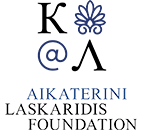Sculptures (441 Subjects)
Antiquities from Pergamon together with a colossal carved statue from Mount Sipylus, close to Manisa in Asia Minor.
The upper part of one of the two sitting statues of Ramses II found at the entrance gate of Ramesseum, the memorial temple of Ramesses II in Luxor (anc. Thebes).
Statue of Harpocrates (Hellenistic deity) that belonged to the collection of doctor Richard Mead. Hellenistic signets. Ancient Weaving weights (A, B, C).
Foot of bronze statue from Myconos island, which John Montagu Sandwich brought to Great Britain. (Α). Foot of colossal marble statue discovered by R. Pococke in Asia Minor (Β). Bronze statue bought by R. Pococke at the bazaar of Aleppo in Syria (C). Lamp from Qift (anc. Coptus) in Egypt (D).
Bronze lamp from Thessaloniki (Α). Bronze lamp from Aleppo (Β). Mirror's frame (C). Decorative mask from Aleppo (D). Ring from Aleppo (Ε). Statue from Aleppo (F). Signet from Beirut (G). Clay head of the Hellenistic deity Harpocrates from Egypt (Η). Charm from Egypt (Ι). Several charms from Egypt.
Colossal statue of Marcus Vipsanius Agrippa, which is found today in the Archeological Museum of Venice. Coins of the era of Marcus Vipsanius Agrippa.
The pylon of the Temple of Luxor (anc. Thebes), together with the colossal statues and the obelisk of Ramses II.
Front view of the Temple of Hathor and Nefertari, also known as the Small Temple, in Abu Simbel Egypt.
View of the Temple of Gerf Hussein, dedicated to the Egyptian deities Ptah, Ptah Tatenen, Hathor and Ramses. This temple has been transferred to Kalabsha.
Arch from the archaeological site of Philippoi and details of the monument. Golden Gate in Thessaloniki and details of the monument. From: Héctor d'Espouy, Fragments d’architecture antique..., Paris, 1897-1925.
Antiquities from Athens: 1. Ionic column capital from the inner peristyle of the Propylaea of the Acropolis. 2. Drawings of the entablature, side view and section of a column capital from the inner peristyle of the Acropolis Propylaea. Plan of Ionic column, drawings of the pedestal. 3. Inscriptions on a metope found in the ancient Agora of Athens.
1, 3: Votive offerings, possibly from Kerameikos cemetery: Urn with relief, funerary stele. 2. Statue of Nike.
View of the walls of Konya. An ancient statue and decorative features from diverse historical periods had been incorporated into the walls, in accordance with a practice distinctive of Seljuk architecture.































